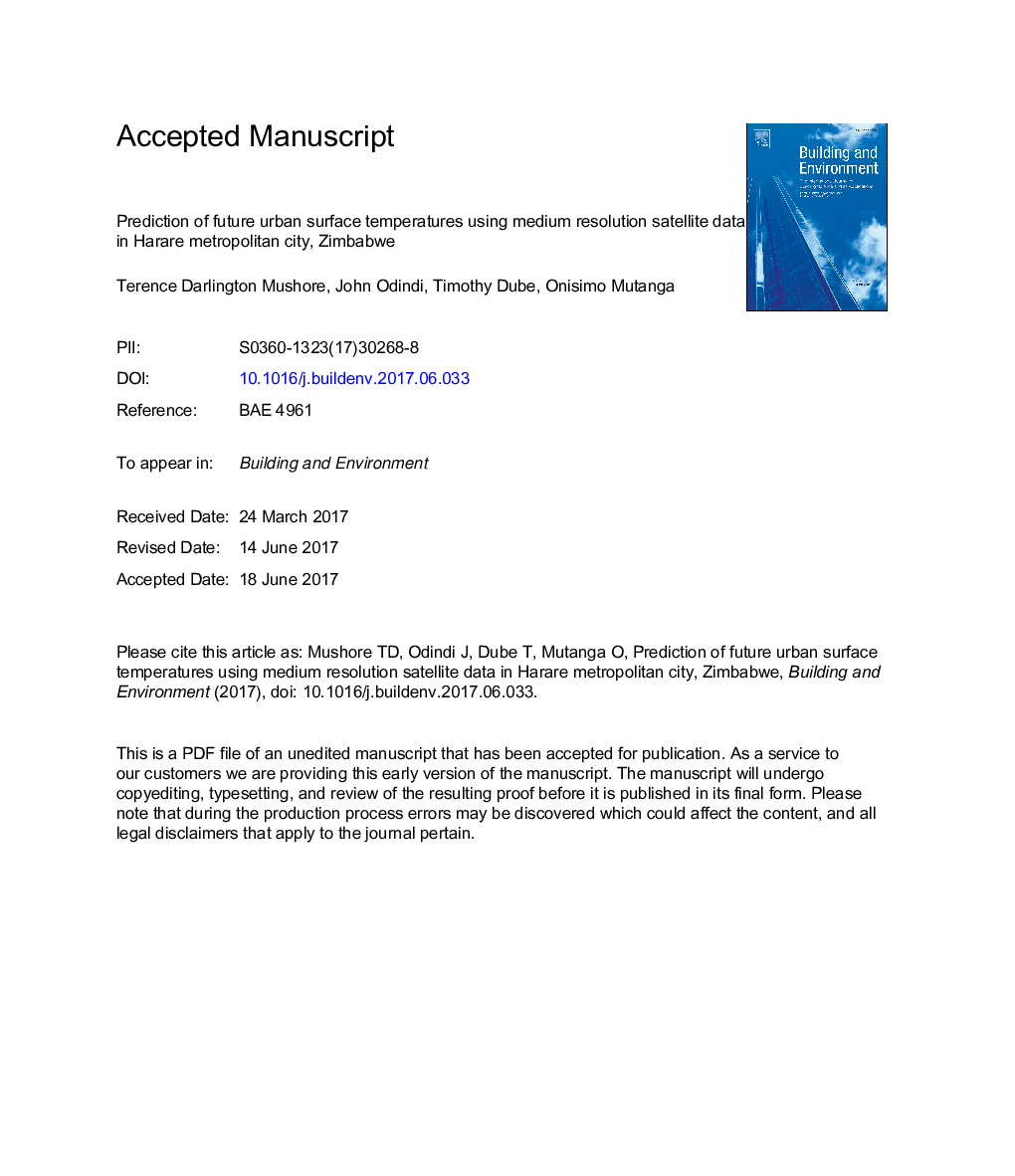| کد مقاله | کد نشریه | سال انتشار | مقاله انگلیسی | نسخه تمام متن |
|---|---|---|---|---|
| 4911476 | 1428370 | 2017 | 40 صفحه PDF | دانلود رایگان |
عنوان انگلیسی مقاله ISI
Prediction of future urban surface temperatures using medium resolution satellite data in Harare metropolitan city, Zimbabwe
ترجمه فارسی عنوان
پیش بینی دمای آبهای سطحی شهر آینده با استفاده از داده های ماهواره ای با وضوح متوسط در شهر بزرگ شهر هارا، زیمبابوه
دانلود مقاله + سفارش ترجمه
دانلود مقاله ISI انگلیسی
رایگان برای ایرانیان
کلمات کلیدی
دمای سطح زمین، سلول های اتوماتای مارکوف، تجزیه و تحلیل زنجیره مارکوف، پیشرفت شهری، پیشرفت شهری، شاخص های گیاهی هاراره،
موضوعات مرتبط
مهندسی و علوم پایه
مهندسی انرژی
انرژی های تجدید پذیر، توسعه پایدار و محیط زیست
چکیده انگلیسی
The objective of the study was to determine the impact of urban growth on future micro-climate of Harare by predicting future distribution of land use and land cover, as well as land surface temperature using Cellular Automata Markov Chain analysis. Landsat series data was used to map Land Use and Land Cover (LULC) and land surface temperature distribution during the month of October for the year 1984, 1993, 2001 and 2015. The Cellular Automata Markov Chain analysis was used to determine long term landscape transformation at 10-year time steps from 2015 to 2045. We further tested the potential of a variety of vegetation and non-vegetation indices to predict land surface temperature. Results show that the Urban Index (UI), non-vegetation index was the best predictor of surface temperature, since it had the highest correlation with retrieved surface temperature (r = 0.9831). When tested against temperature derived from thermal band in October 2015, the mean absolute percentage error of the UI derived temperature was 5.27%. Based on changes which occurred between 1984 and 2015, the Cellular Automata Markov Chain analysis predicted that high density built-up areas will increase monotonically from 470.02 in 2015 to 490.36 km2 in 2045. Green spaces were predicted as decreasing from 57.42 to 27.85 km2, while croplands also decrease from 30.27 to 16.93 km2 between 2015 and 2040. Using UI as predictor of land surface temperature, we predicted that the 18-28 °C class will decrease in coverage between 2015 and 2040, while the 36-45 °C category will increase in proportion covered from 42.5 to 58% of city. We concluded that continued urban growth will increase warming and result in high future temperatures unless mitigation efforts are strengthened. The findings of this study are important in informing future development of cities to consider growth implications on future temperatures and thermal comfort of urban residents.
ناشر
Database: Elsevier - ScienceDirect (ساینس دایرکت)
Journal: Building and Environment - Volume 122, September 2017, Pages 397-410
Journal: Building and Environment - Volume 122, September 2017, Pages 397-410
نویسندگان
Terence Darlington Mushore, John Odindi, Timothy Dube, Onisimo Mutanga,
